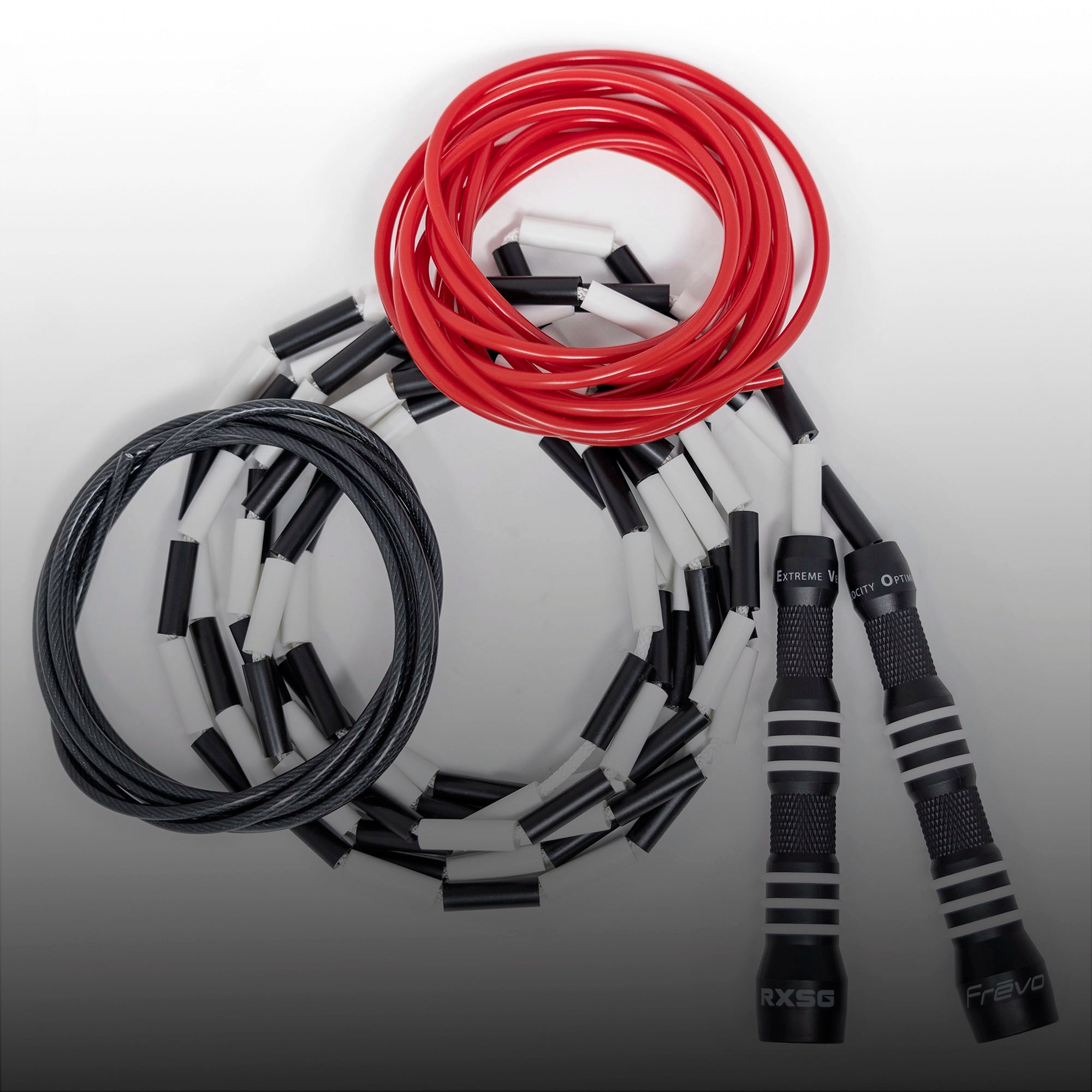Jumping rope has quickly become one of the most popular forms of cardio today. This is because it’s convenient, easy to learn, and doesn’t require much equipment. All you really need is a jump rope, and you’re good to go. Some decent shoes will help soften the impact when you jump, and you can always buy some gym clothes to sweat it out in.
The typical jump rope workout can burn up to 600 calories in just half an hour–that’s a staggering amount for such a simple workout. That’s because jumping rope engages many of your muscles. You’re using your lower body for jumping and landing, and you’re also bracing your core when you do it. You’ll also be rotating your arms, thus strengthening your upper body too. In short, jumping rope is perhaps one of the best ways to burn calories, improve cardiovascular health, and also strengthen your entire body.
But when it comes to optimizing your jump rope routine, there are two popular approaches; time-based and rep-based workouts. In this post, we’ll be explaining what the two mean and why you might choose one over the other.
A time-based jump rope workout focuses on the amount of time that you spend jumping rope. For example, someone might set a target of 14 minutes non-stop with a 1-minute break, and then repeat this over the course of an hour. This is popular for people who want to set a certain amount of time for their jump rope workout. Some people like to dedicate something like an hour or half an hour to working out each day, so it’s easy for them to decide how much time they want to dedicate to jumping rope.
So, what kind of benefits can you expect from a time-based jump rope workout?
You get a bit more flexibility when choosing the length of your workouts
A time-based jump rope workout is simple to understand. You jump for a certain amount of time and then you’re done. This makes it a great option to fit into your existing workout routines, or if you’re limited on how much time you can or want to spend working out. You have the freedom to adjust the intensity of your workout, as long as you’re able to hit that time-based target.
A lot of people enjoy adjusting the intensity based on the time as well. For example, let’s say you have a 30-minute target for jumping rope, but you want to slowly ramp up the intensity to make it easier for you to manage. You can start with a 5-minute warmup, then go into a 10-minute sprint that’s really intense. You can then cool off for 5 minutes by lowering the intensity, and then the last 10 minutes can be a sprint where you go as fast as you can. This is just one example of how you can separate your time-based jump rope workout.
Another way to use time-based jump rope workouts is to add them to your existing routine. Perhaps you have 15 minutes dedicated to intense cardio in your workout routine, and you’re looking to add something different to shake things up. You could do 15 minutes of intense rope jumping one day, and then do 15 minutes of rowing another day. With a time-based workout, you can easily organize your workout routines to fit in different kinds of cardio without worrying too much about how long it takes to finish reps.
You build endurance with long jump rope sessions
Another benefit of time-based jump rope workouts is that you build endurance and improve your cardiovascular health. This is because you’re pushing your heart rate higher and sustaining it for longer periods of time when you engage in a time-based jump rope workout. Maintaining a high heart rate is essential for pushing your body and improving cardiovascular health and endurance. So if you want to boost your stamina, a time-based workout is usually the way to go.
Remember that it’s all about your heart rate. The length of time isn’t as important as how long you manage to stay within your target heart rate range. As such, it’s a good idea to get something to monitor your heart rate. This will let you know if you need to adjust your workout to increase the intensity, or if you need to slow down a bit because you’re pushing yourself too much.







Leave a comment
This site is protected by hCaptcha and the hCaptcha Privacy Policy and Terms of Service apply.